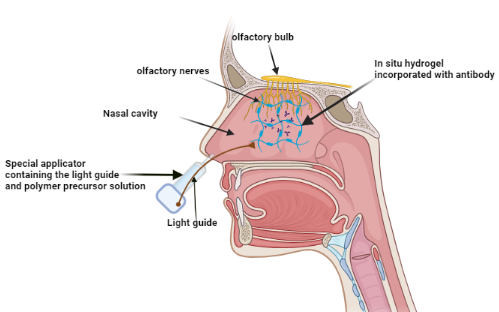The intranasal (IN) route has been investigated for decades as a suitable alternative to parenteral routes for the delivery of both lipophilic and hydrophilic therapeutics. The IN route of drug delivery is non-invasive, with several advantages including the avoidance of hepatic first pass metabolism, ease of administration, improved patience compliance, accelerated absorption, and the avoidance of the toxicity associated with the systemic delivery of therapeutic agents. The nasal route also grants direct access to the brain, making it the suitable route in terms of delivering therapeutic agents to the brain for the treatment of neurogenerative diseases.
Transport and absorption of therapeutics in the nasal cavity segregates the nose into three main sectors namely: the vestibule, the respiratory and the olfactory sectors. The vestibule serves as the immediate first line of defense against pathogens and dust, the respiratory part aids in systemic adsorption due to its endowment with capillary and relatively permeable epithelium. Buried inside the nasal cavity is the olfactory region with a direct connection with the brain. This region comprises of olfactory mucosa, the olfactory bulb, and the olfactory nerve bundles which expedite therapeutics transport through the by-pass of the blood brain barrier. Regardless of the numerous advantages associated with this route of administration, it is characterized by narrow surface area for absorption, irregular administration, irreversible damage to the nasal cavity due to periodic administration and finally mucocillary clearance .
The above-mentioned weaknesses have necessitated the need to formulate novel drug delivery systems capitalizing on the potentials of the nasal mucosa through the formulation of in situ mucoadhesive hydrogels. These hydrogels augment resident time of pharmaceutical formulations promoting sustained release for desired period.
For the scope this research, hyaluronic acid a linear polysaccharide made up of D-glucuronic acid and D-N-acetylglucosamine linked through alternating β-1,4 and β-1,3 glycosidic bonds is the polymer of choice due to its known mucoadhesive properties. In view of this, in situ mucoadhesive hydrogels will be formulated based hyaluronic acid and its derivatives for the sole aim of delivering therapeutics to the brain via the nasal mucosal route for the treatment of neurodegenerative diseases.
